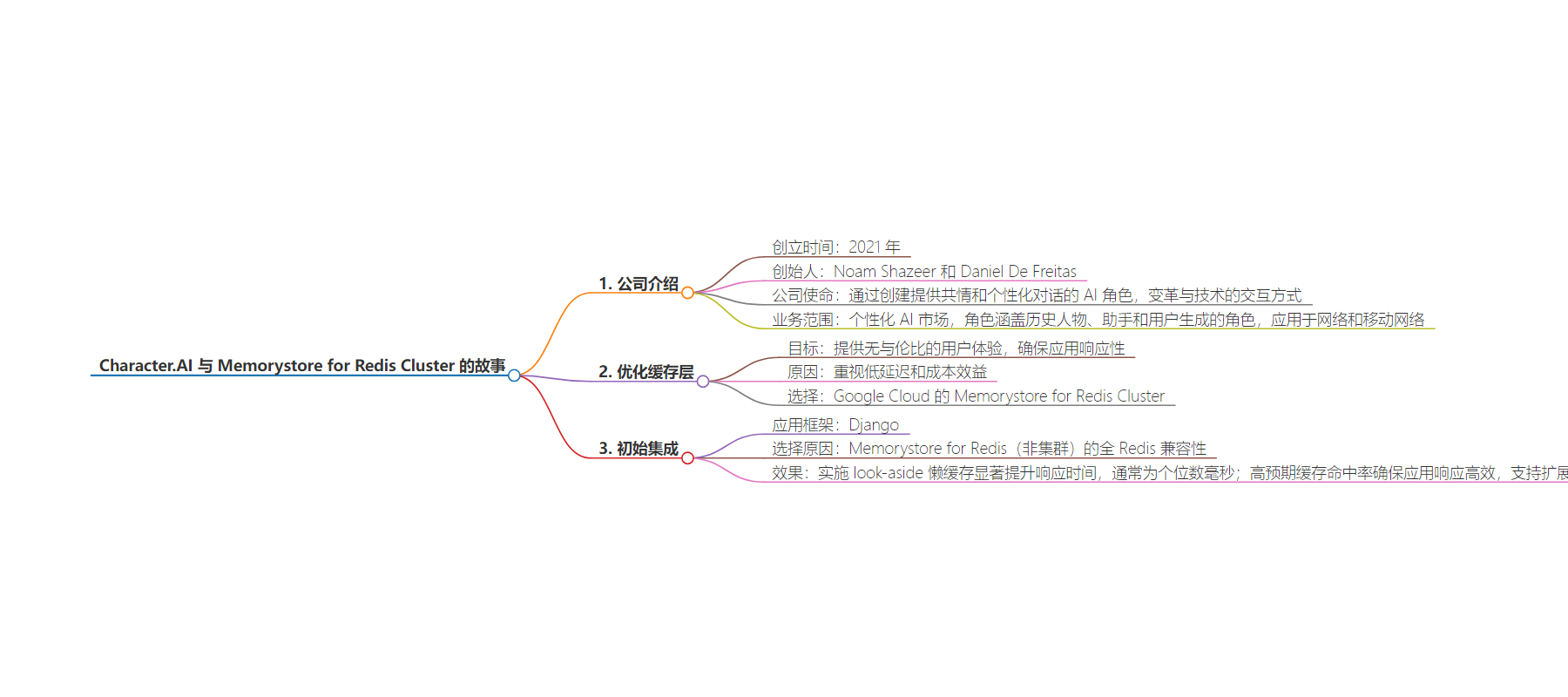包阅导读总结
1.
关键词:Character.AI、Memorystore for Redis Cluster、AI 应用、缓存优化、用户体验
2.
总结:本文介绍了 Character.AI 作为个性化 AI 市场的领导者,为优化用户体验致力于缓存层优化,选择了 Google Cloud 的 Memorystore for Redis Cluster,初期集成效果显著,提升了响应速度。
3.
主要内容:
– Character.AI 是由前谷歌 AI 开发者创立,在个性化 AI 市场表现出色,其使命是革新人机交互方式。
– 拥有大量用户,估值达 10 亿美元。
– 致力于通过先进缓存机制提升用户参与度。
– 为优化应用响应性和用户体验,开展缓存层优化之旅。
– 选择 Google Cloud 的 Memorystore for Redis Cluster 因规模需求和追求效率。
– 初期在 Django 应用中集成 Memorystore for Redis(非集群),因完全兼容 Redis 满足需求。
– 实施 look-aside 懒缓存显著提升响应时间。
– 高预期缓存命中率确保应用高效响应,即使规模扩展。
思维导图:
文章来源:cloud.google.com
作者:James Groeneveld
发布时间:2024/6/28 0:00
语言:英文
总字数:1032字
预计阅读时间:5分钟
评分:88分
标签:数据库,客户
以下为原文内容
本内容来源于用户推荐转载,旨在分享知识与观点,如有侵权请联系删除 联系邮箱 media@ilingban.com
In the rapidly evolving landscape of artificial intelligence and conversational applications, Character.AI stands out as a trailblazer of innovation. Founded in 2021 by former Google AI developers Noam Shazeer and Daniel De Freitas, Character.AI has quickly become a leader in the personalized AI market. The company’s mission is to revolutionize the way we interact with technology by creating AI-powered Characters that offer empathetic and personalized conversations. These Characters range from historical figures to helpers, and even user-generated personas, providing a wide array of interactive experiences for users across its web and mobile web applications. With a significant user base and a valuation soaring to $1 billion, Character.AI’s journey in enhancing user engagement through advanced caching mechanisms is not just a technical endeavor but a testament to its commitment to user satisfaction and innovation.
Overview
At Character.AI, our goal is to deliver an unparalleled user experience, where application responsiveness plays a crucial role in ensuring user engagement. Recognizing the importance of low latency and cost-effectiveness, we embarked on a journey to optimize our caching layer, a critical component of our application’s infrastructure. Our journey led us to adopt Google Cloud’s Memorystore for Redis Cluster, a decision driven by our scaling needs and our quest for efficiency. This blog post aims to share our experiences, challenges, and insights gained throughout this journey, highlighting our transition from initial integration to overcoming scaling hurdles and finally embracing Memorystore for Redis Cluster.
Initial integration
Our initial foray into using Memorystore for caching within our Django application was straightforward, thanks to Django’s versatile caching options. We chose Memorystore for Redis (non-cluster) for its full Redis compatibility, which met our requirements across numerous application pods. The implementation of look-aside lazy caching significantly improved our response times, with Memorystore typically delivering single-digit millisecond responses. This approach, coupled with a high expected cache hit rate, ensured that our application remained responsive and efficient, even as we scaled.
